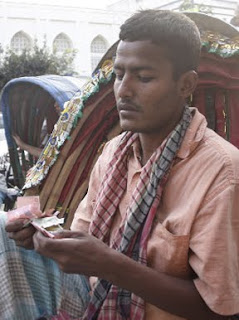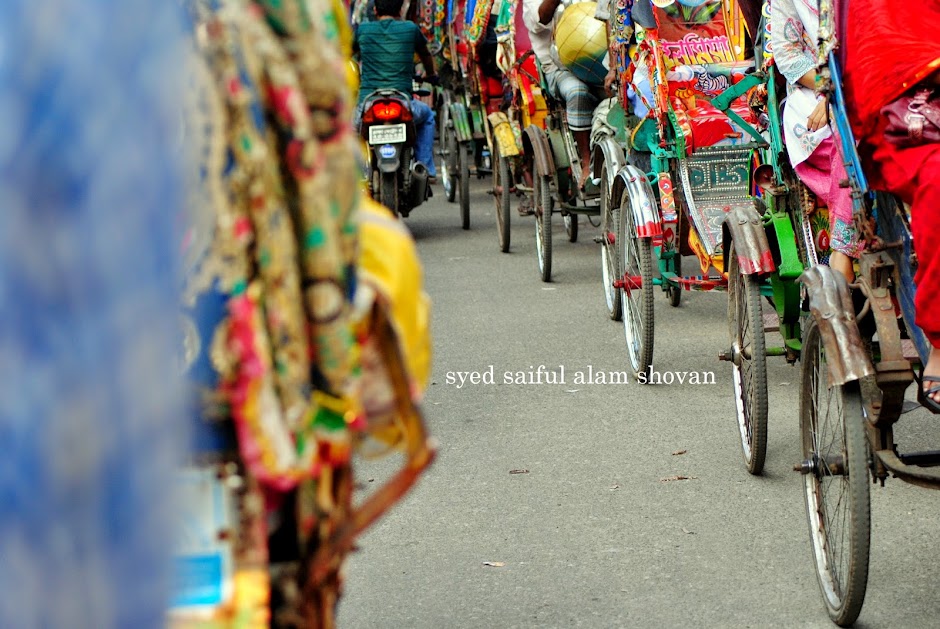
Rickshaw puller in Dhaka earns Tk 6,300 per month: JICA study
Hard-working rickshawpuller earns upto Tk 14,000
Munima Sultana
An hard working rickshaw puller in the capital earns up to Tk14,000 a month --- eight times the basic minimum wages of a garment worker, a Japanese study on city's transport sector has revealed.
Dhaka's half a million rickshaw pullers may be gaunt and emaciated but their average monthly income is more than a police constable or a second tier government officer, the study by Japan International Cooperation Agency said.
"Some 35 per cent of Dhaka's half a million rickshaw-puller earn between Tk5000 and Tk7000 while 25 percent earn between Tk7000 and Tk9000," according to the Dhaka Urban Transport Network Development Study (DHUTS).
On average a rickshaw-puller earns Tk 6300 a month by driving rickshaws six to eight hours a day. Even an irregular rickshaw-puller can earn Tk3000 a month, it said.
"The highest earnings by some rickshaw pullers were found to be Tk 14,000 a month," said Yoichi Sakurada, leader of the study team.
"Some eight per cent of the rickshaw pullers we interviewed said that their monthly income was Tk10,000 or more," he said.
The study demolishes the myth that the rickshaw pullers are one of the lowest earning working groups in the city, regularly portrayed as "oppressed" and "deprived" people in the country's popular media.
According to the study, an average rickshaw puller earns nearly four times more than an average garment worker, whose basic minimum wage is Tk1662.50 set in 2006.
Their average income is also nearly twice the average per capita Gross Domestic Product (GDP) of the country. Bangladesh's per capita GDP was US$620 in the last financial year, or nearly Tk3600 a month.
Rickshaws are the most dominant mode of transporation in Dhaka, accounting for one-thirds of the city's 23 million daily trips.
The study said an average rickshaw puller carries 40 person a day, mostly in shorter trips with median size 2.4 kilometre.
A driver usually demands Tk 10 for every kilometre distance. The maximum distance he drives is 10km, it said.
Students are the most frequent users of rickshaws, making up 52.2 per cent of the vehicles' trips followed by businessmen with 39.5 per cent.
Dhaka Transport Coordination Board commissioned the DHUTS, the most wide-ranging in recent years, as part of its feasibility study on metro rails and elevated expressway in the capital.
In the first phase, the study examines recent trend in the transport sector, current level of public services, trip characteristics and expansion of the Dhaka city.
People having income above Tk 50,000 a month use cars for only 17 per cent of their trips, the study says. They also use rickshaws and buses for daily commuting.
The Financial Express
